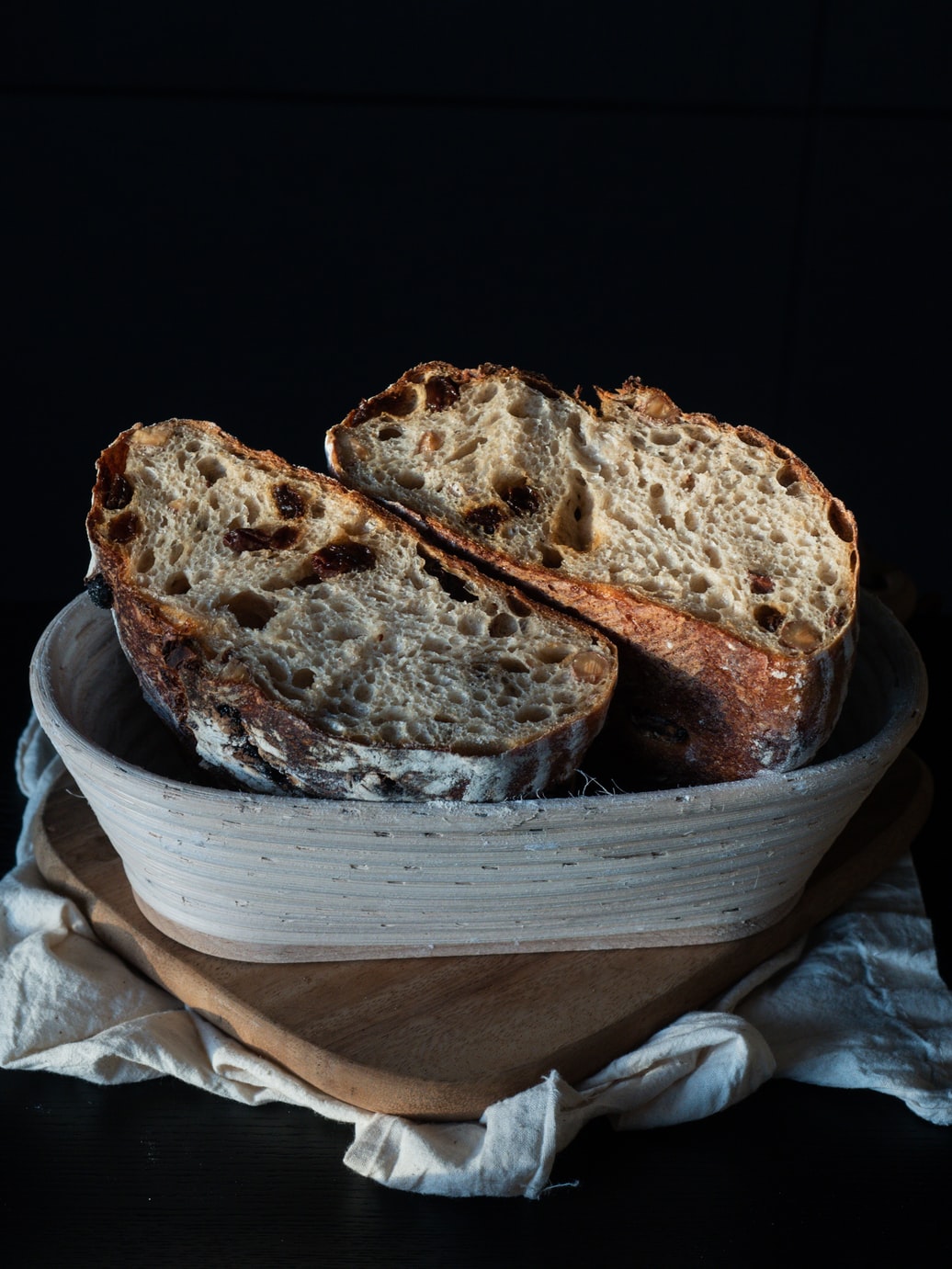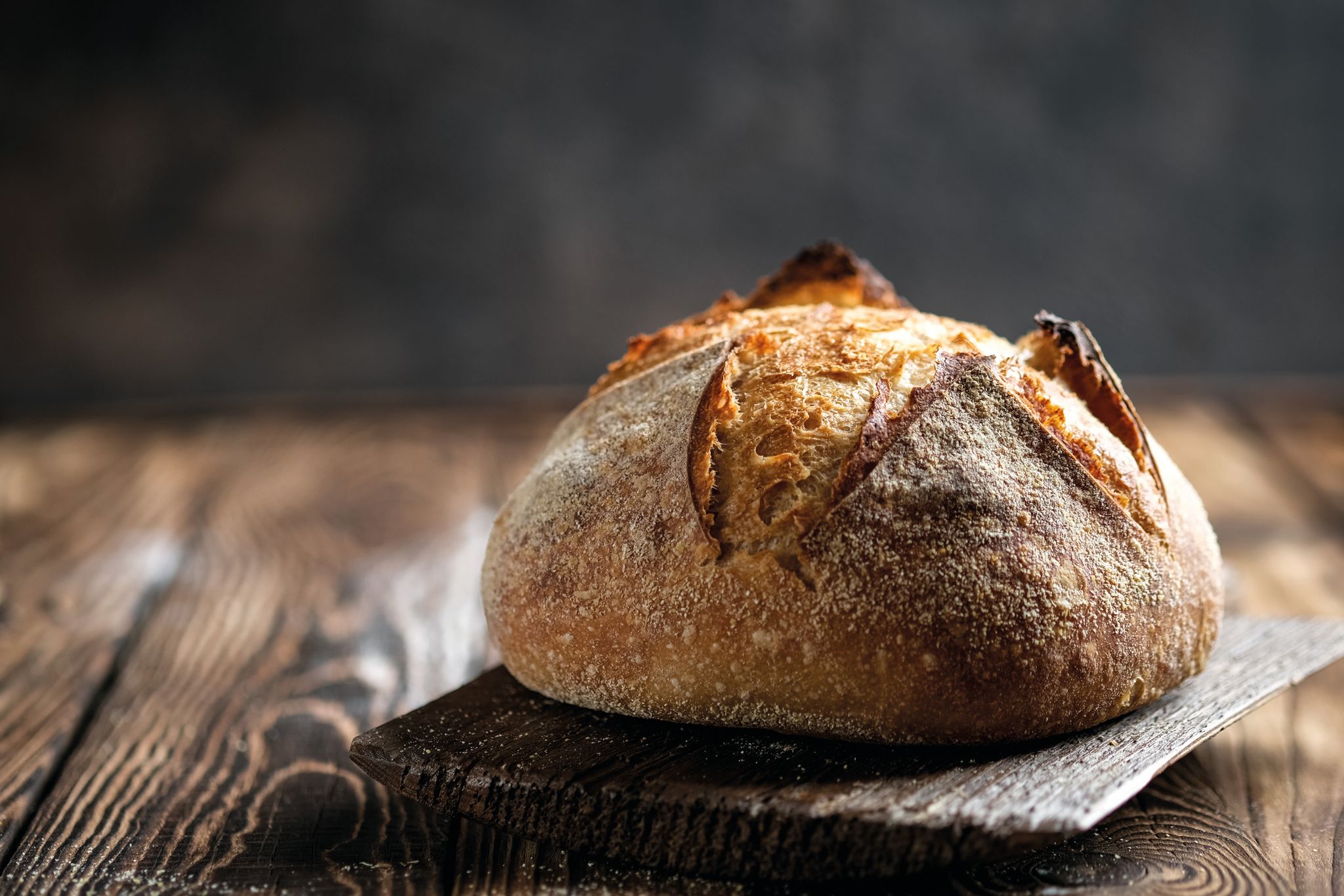Solace in Sourdough
Making bread is a meditative act. It takes time and patience, and it results in food that is both comforting and delicious. Is it any wonder then, that when things were at their bleakest during the pandemic, so many of us found solace in baking bread? In fact, if there is one pandemic trend we hope is here to stay, it’s our renewed love for bread—especially sourdough, with its dense, chewy crumb and subtly tangy flavour.
“What’s come out of this is a real appreciation for the craft,” says Bruce Stewart, the owner of True Grain organic craft bakery in Cowichan Bay. He recalls one customer who, like so many of us, started making bread during the pandemic. They told him: “I used to wonder how that bread could be $5.99. And now I’ve been making it, I wonder how it could only be $5.99.”
Bread is not just the most comforting of carbs. It has also nourished us for thousands of years and created connections among friends and family. Even today, we make it much the same way bakers did back in ancient Egypt.
“There’s very few professions now that have been around as long as bread making has been and are still relevant,” says Cliff Leir, the owner of Victoria’s Fol Epi and Agrius restaurant. “The process of making bread and feeding community is everything I wanted in my life.”
 Part of what makes bread so enduring is its simplicity. It is created with flour, water, leavener and maybe some salt. Simple, though, doesn’t always mean easy, because the quality of that flour and leavener, and how you use them, makes all the difference in the world.
Part of what makes bread so enduring is its simplicity. It is created with flour, water, leavener and maybe some salt. Simple, though, doesn’t always mean easy, because the quality of that flour and leavener, and how you use them, makes all the difference in the world.
As Leir says, “It’s both very simple and basic, and intensely complex at the same time. There’s a heavy science aspect to it, but...you are also working with your hands. You have to be engaged with your dough and the environment.”
“The biggest thing I’ve learned is that time and temperature are ingredients,” says Sharon Janzen. She’s the baker and co-owner of Alderlane Farmhouse Bakery in Black Creek, and she sells seven different types of sourdough bread at the Comox Valley Farmers’ Market on Saturdays and from her farmhouse on Friday afternoons.
Although she has been selling home-baked goods since 2005, she only fell in love with bread a couple of years ago, when she travelled to Europe with Vancouver Island University’s professional baking and pastry field school.
“It was a transformation. That’s when I took a completely different track,” Janzen says. The very first day of the trip, they studied bread at a Belgian bakery school, and she was smitten. She remembers thinking, “If the trip is over and I have to go home today that’s OK because this is the best day I’ve ever had.”
For Leir and Stewart, the passion for bread began years earlier.
Stewart opened True Grain in 2004, with the idea of milling B.C.-sourced organic wheat and ancient grains like einkorn, spelt and emmer, then using them to make bread the way it was before everything was mechanized and over-processed.
“The reason that we started was the recognition that you just couldn’t get good bread any more. It was a dying craft,” says Stewart, whose sales of flour soared during the pandemic. “When you bake with different grains...it comes through in the taste and the texture of the crust and the crumb. We’ve always been passionate about taking a step back and doing this the way it’s always been done.”
Meanwhile, Leir came to bread through a fascination with fermentation. Twenty-five years ago, he created a wild yeast starter that he still uses today. (Sourdough starters comprise only flour, water, wild yeast and lactic acid bacteria, and need a slow fermentation that can take up to three days.)
“Almost all of our breads ferment overnight, a long, cool fermentation,” says Leir, who found himself doling out starter throughout the pandemic. “It’s great for flavour and texture development and, from a health perspective, fermented breads are more easily digestible and nutritionally available.”
Bread made in the traditional way, with a sourdough starter and freshly milled grains, is a health food. It is high in fibre, protein, vitamins and minerals. It’s good for digestion—and for the soul. But starting in the 19th century, manufacturers started taking short cuts to make bread cheaper, faster and easier to produce. They hybridized wheat, added conditioners to flour and created fast-acting, shelf-stable baker’s yeast.
“Until the 1800s, all bread was sourdough, until yeast was commercialized,” says Stewart, noting that in the Old West, cowboys carried sourdough starter in their saddlebags. “I love sourdough. It’s the only way to go, I think.”

But sourdough starters are more unpredictable than commercial yeast, which is why they can be such a challenge for bakers. “You’re dealing with a living organism, and there’s a lot of factors here. There’s a lot of parts to it,” says Stewart. “It’s not about the recipe. It’s about the process.”
Other mistakes novice bakers tend to make include using too much dry yeast or too much flour, not allowing the dough to ferment long enough or handling it too roughly, Janzen says. “We grow up making bread by punching it and overworking it. I learned that I could just treat it really gently and fold it. People aren’t finding the right touch,” she adds. “It’s more of a gentle process. You just pull and stretch, until the bread says no.”
But, she hastens to add, even if your loaf isn’t perfect, it’s not a failure. “It is still delicious,” Janzen says. “It didn’t fail just because it’s too flat.”
Leir agrees. “There’s no screwing it up. It’s understanding your ingredients and understanding how the process works.”
Bread is humble. Bread is simple. Bread is our everyday nourishment. As Stewart says, “That’s craftsmanship. That’s the authenticity of the process. That’s what we’re trying to deliver.”





